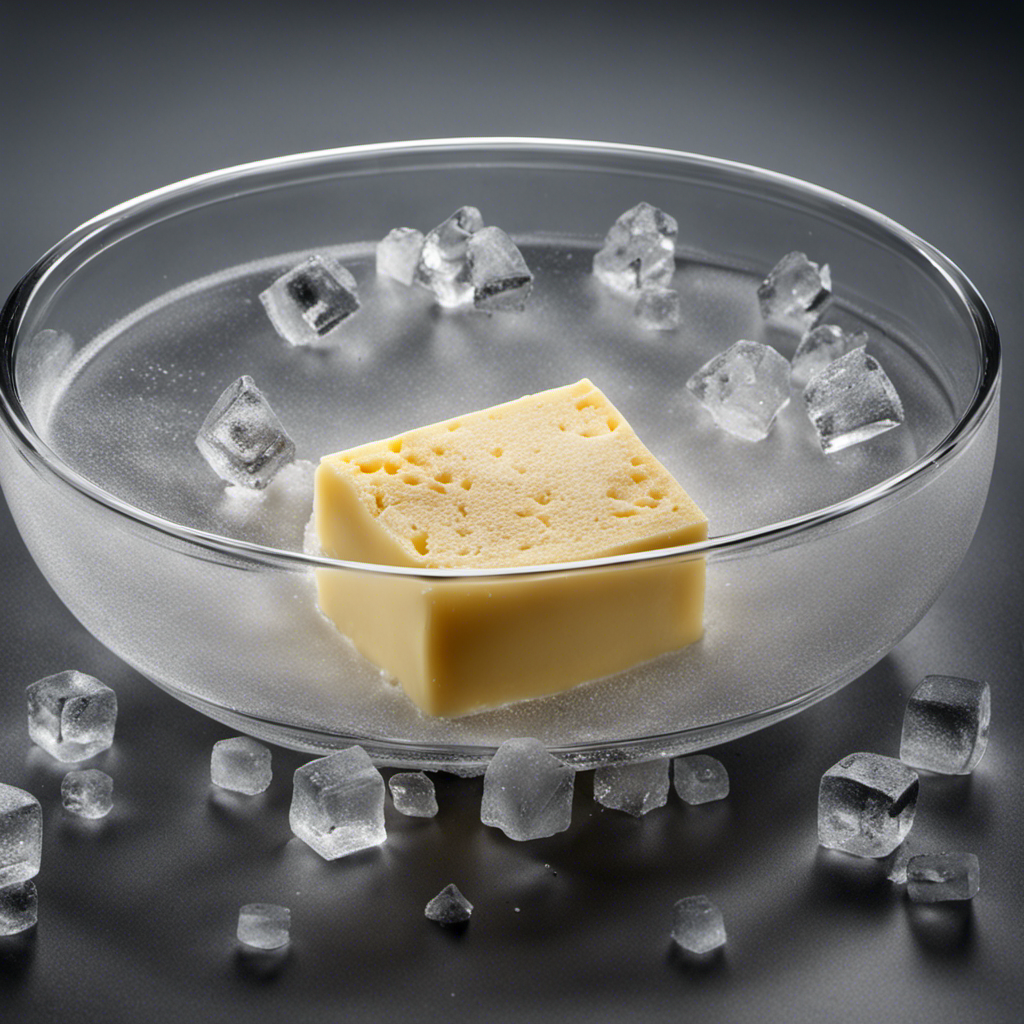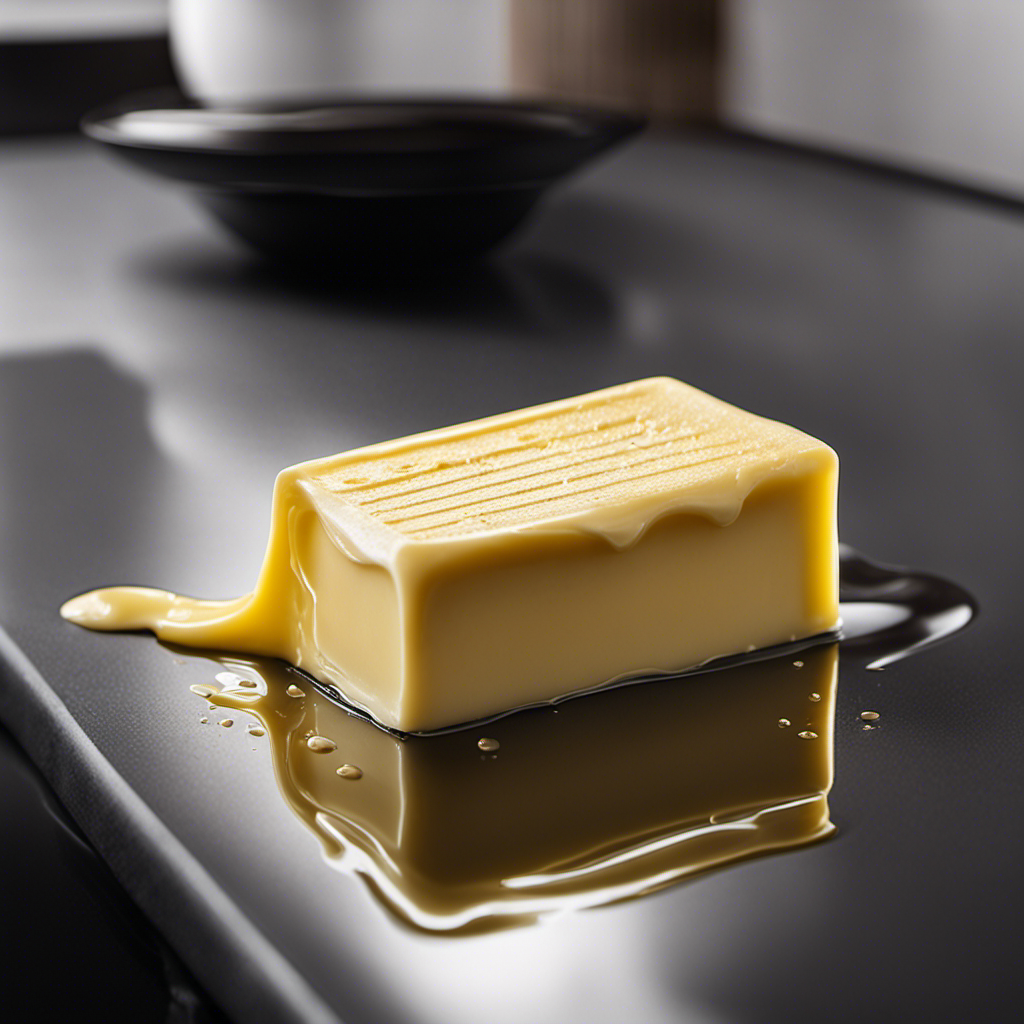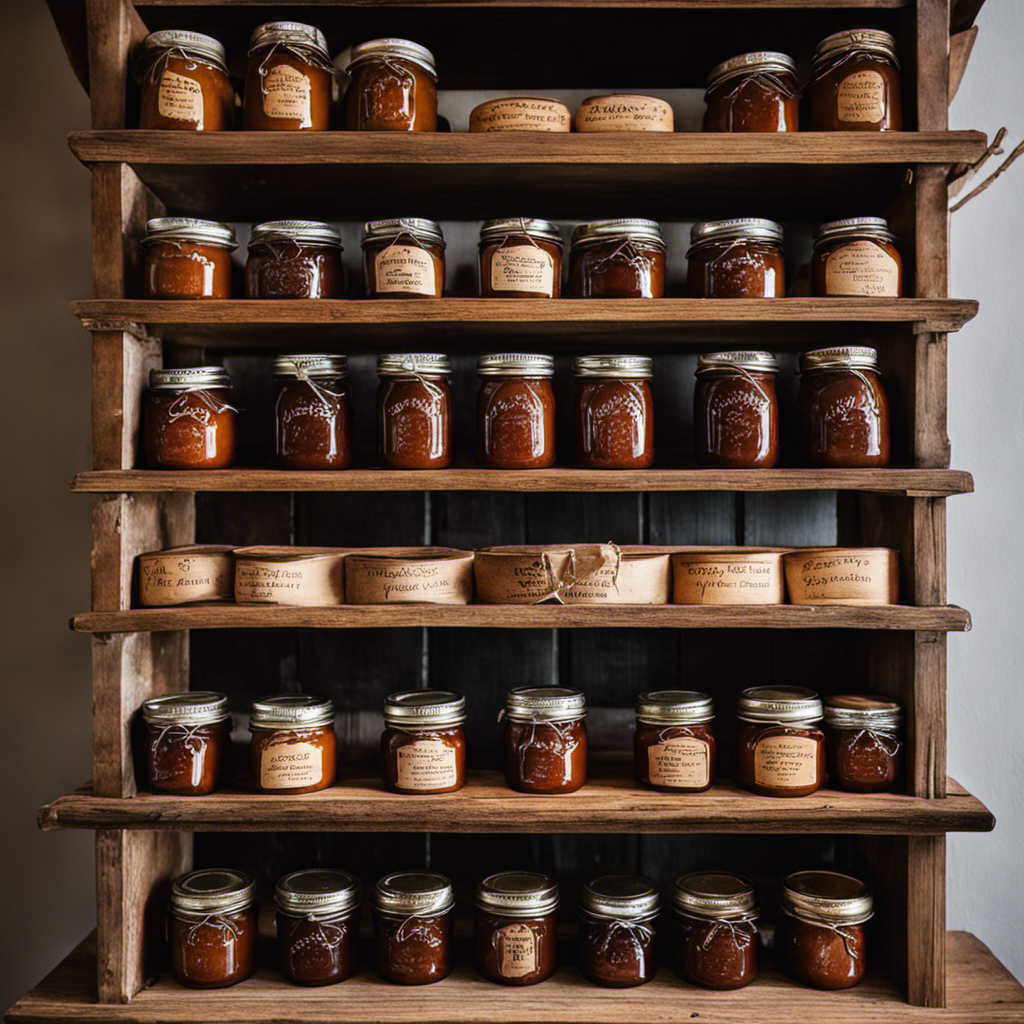I researched the optimal freezing time for butter and I am eager to share my discoveries with you.
Freezing butter can be a convenient way to extend its shelf life, but it’s important to know how long to freeze it for optimal results.
In this article, I will discuss the recommended freezing time for butter, factors that can affect freezing time, proper packaging and labeling techniques, as well as tips for safely thawing and using previously frozen butter in recipes.
So, let’s dive in and discover the answers to the question: How long to freeze butter?
Key Takeaways
- Freezing butter can extend its shelf life for around six to nine months.
- The freezing process helps preserve the flavor and texture of butter.
- Proper packaging, such as airtight containers or freezer bags, is important to prevent air exposure and freezer burn.
- Thawing methods include refrigerating overnight, using a water bath, microwaving on the defrost setting, or allowing it to come to room temperature.
Recommended Freezing Time for Butter
The recommended freezing time for butter is typically around six to nine months.
When it comes to storing butter in the freezer, there are a few recommended storage methods to ensure its quality and freshness.
First, it is important to wrap the butter tightly in aluminum foil or place it in an airtight container to prevent freezer burn and odors from affecting its taste.
Additionally, labeling the butter with the date of freezing can help keep track of its storage time.
Freezing butter has several benefits. It extends the shelf life of butter, allowing you to stock up when it’s on sale or when you have excess butter.
It also preserves the flavor and texture of the butter, making it a convenient option for future use in baking or cooking.
Factors Affecting Butter Freezing Time
When it comes to freezing butter, two key factors that can affect the freezing time are temperature and consistency.
The colder the temperature, the faster the butter will freeze, so it is important to set the freezer at the optimal temperature. Additionally, the consistency of the butter can also impact the freezing time, with softer butter freezing quicker than harder butter.
Another factor to consider is the packaging and air exposure. Properly wrapping the butter in airtight packaging can help prevent freezer burn and maintain the quality of the butter during freezing.
Temperature and Consistency
To achieve the desired consistency, you’ll need to adjust the temperature when freezing butter. Temperature control plays a crucial role in determining the final texture and consistency of the frozen butter. The ideal temperature for freezing butter is around 0°F (-18°C). This low temperature allows the fat in the butter to solidify, resulting in a firm and easy-to-slice texture. However, if the temperature is too low, the butter may become overly hard and difficult to spread. On the other hand, if the temperature is too high, the butter may become soft and lose its shape. Finding the right balance is key to achieving the perfect consistency.
| Temperature (°F) | Consistency |
|---|---|
| Below 0°F (-18°C) | Very hard |
| 0°F (-18°C) | Firm and sliceable |
| Slightly above 0°F (-18°C) | Soft and spreadable |
Packaging and Air Exposure
Packaging and air exposure can affect the texture and quality of frozen butter. When butter is exposed to air, it can undergo oxidation, which leads to off-flavors and a decrease in overall quality. Additionally, air exposure can cause the butter to become dry and crumbly, as it loses moisture content over time.
To preserve the texture and quality of frozen butter, it is important to follow these guidelines:
-
Use airtight packaging: Wrap the butter tightly in plastic wrap or place it in a freezer-safe container with a tight-fitting lid to minimize air exposure.
-
Remove excess air: Squeeze out any excess air from the packaging before sealing it to further reduce the amount of air in contact with the butter.
-
Store in a cold, dry place: Keep the packaged butter in the coldest part of the freezer, away from any sources of moisture, to maintain its moisture content and prevent freezer burn.
Proper Packaging for Freezing Butter
When it comes to freezing butter, selecting the right packaging is crucial in order to avoid dreaded freezer burn.
Through extensive research, I have found that the best packaging option for freezing butter is airtight containers or freezer bags.
These options provide a barrier that prevents air and moisture from reaching the butter, thus preserving its quality and preventing freezer burn.
Best Butter Packaging
You can choose the best butter packaging by considering factors like durability and moisture resistance. When it comes to butter alternatives or substitutes, proper packaging is essential to maintain their freshness and quality. Here are three key factors to consider when selecting the best butter packaging:
-
Material: Look for packaging made from high-quality materials that provide a barrier against moisture and oxygen. This will help prevent the butter from spoiling or absorbing unwanted odors.
-
Sealability: Opt for packaging that has a secure and airtight seal. This will ensure that the butter remains fresh and protected from external contaminants.
-
Size and Shape: Consider the size and shape of the packaging in relation to your storage needs. Smaller portions may be more convenient for individual use, while larger containers are ideal for bulk storage.
Avoid Freezer Burn?
When it comes to freezing butter, one of the biggest concerns is avoiding freezer burn. Freezer burn occurs when moisture is lost from the butter and it becomes dry and discolored.
To prevent this from happening, here are some tips for freezing butter:
-
Use airtight packaging: Wrap the butter tightly in plastic wrap or use a freezer-safe container to prevent air from coming into contact with the butter.
-
Double wrap: For added protection, consider double wrapping the butter. This can be done by placing the wrapped butter in a resealable freezer bag.
-
Label and date: Always label the packaging with the date of freezing to ensure you use the butter within the recommended storage time.
-
Store properly: Place the wrapped butter in the coldest part of the freezer, away from any strong odors.
How to Label Frozen Butter
To label your frozen butter, simply write the date on the packaging with a permanent marker. This simple step will help you keep track of the expiration dates and ensure that you use the butter before it goes bad.
Here are some labeling instructions to help you make the most of your frozen butter:
-
Include the date of freezing: Write down the date when you put the butter in the freezer. This will help you determine how long it has been frozen and when it might need to be used.
-
Use clear and legible handwriting: Make sure that the date is written clearly and can be easily read. This will prevent any confusion and ensure that you can easily identify the butter’s freezing date.
-
Rotate your stock: When you add a new pack of butter to the freezer, make sure to place it behind the older packs. This will help you use the older butter first and prevent any wastage.
Storing Frozen Butter in the Freezer
Storing frozen butter in the freezer helps to preserve its freshness and extend its shelf life. It’s a simple and effective way to ensure that your butter stays usable for a longer period of time. But what about storing butter at room temperature? Is it a viable alternative to freezing? Let’s take a look at the options:
| Method | Shelf Life | Freshness |
|---|---|---|
| Freezing | Up to 12 months | Maintained |
| Room Temperature | Up to 2 weeks | Decreased |
| Refrigerating | Up to 1 month | Maintained |
While freezing is the best option for long-term storage, room temperature can work for short periods. However, it’s important to note that butter stored at room temperature may lose its freshness sooner. Refrigerating is another alternative, but it doesn’t offer the same extended shelf life as freezing.
Thawing Frozen Butter Safely
Thawing frozen butter safely can be done by leaving it in the refrigerator overnight. This method is the most recommended as it allows for a gradual thawing process, preventing moisture loss and maintaining the butter’s texture.
However, if you need to thaw butter quickly, there are alternative techniques you can try:
-
Water bath: Place the frozen butter in a sealed plastic bag and submerge it in a bowl of lukewarm water for a few minutes. This gentle heat will thaw the butter evenly without compromising its quality.
-
Microwave: If you’re in a hurry, you can use the microwave to thaw butter. Start by cutting the butter into smaller pieces and then microwave it on the defrost setting for short intervals, checking and rotating the pieces to ensure even thawing.
-
Room temperature: If you have some time to spare, you can also thaw butter by leaving it at room temperature. Remember to keep it covered to prevent any contamination and place it away from direct sunlight or heat sources.
Using Previously Frozen Butter in Recipes
When using previously frozen butter in recipes, make sure to allow it to come to room temperature before incorporating it into your ingredients. Using thawed butter in baking can be a convenient option, especially if you have some leftover butter that you want to use up.
Freezing butter for longer periods of time can have several benefits. First, it helps to extend the shelf life of the butter, preventing it from spoiling. Additionally, freezing butter can help to preserve its freshness and flavor. When you freeze butter, it slows down the oxidation process, which can cause the butter to become rancid.
Frequently Asked Questions
Can I Freeze Butter in the Original Packaging It Comes In?
Yes, you can freeze butter in its original packaging. However, it is recommended to use airtight freezer bags or containers for better preservation. This helps prevent freezer burn and extends the shelf life of the butter.
Is It Safe to Freeze Butter for an Extended Period of Time?
Freezing butter for an extended period of time can have long term effects on its taste and texture. To maintain quality, store frozen butter in an airtight container or wrap it tightly in plastic wrap and aluminum foil.
Can I Freeze Butter That Has Already Been Opened?
Yes, you can freeze opened butter. Freezing butter extends its shelf life and preserves its freshness. However, there are alternatives to freezing butter, such as using it within its recommended storage timeframe or clarifying it for longer storage.
Can I Freeze Salted and Unsalted Butter in the Same Container?
Yes, you can freeze salted and unsalted butter together in the same container. It is best to use a plastic container to prevent any flavor transfer. Make sure to wrap the butter tightly before freezing.
Can I Freeze Butter in a Glass Container?
Yes, you can freeze butter in a glass container. Glass is a great option for freezing butter as it is airtight and helps to maintain the quality and freshness of the butter while in the freezer.
Conclusion
In conclusion, freezing butter is a convenient way to extend its shelf life and ensure its freshness. However, the recommended freezing time for butter can vary depending on various factors such as the type of butter and the storage conditions.
Proper packaging and labeling are crucial to maintain the quality of frozen butter. Thawing frozen butter safely is essential to preserve its taste and texture.
So, how long should you freeze butter? Stay tuned for the thrilling revelation in the next article!









